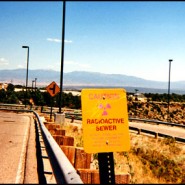YouTuber films at Ill. NPP to prove nuclear safety

[Follow link to video] https://r.smartbrief.com/resp/rvrbCvkkgCDyoRpECifOzBBWcNFWWR
Kyle Hill, a YouTuber known for professionally produced science videos, has filmed a documentary at the Dresden Generating Station in Illinois that provides a rare glimpse into the nuclear power plant and aims to educate viewers on the safety and benefits of nuclear energy. The documentary, transparently named “I Kissed Nuclear Waste To Prove a Point,” is meant to show that “the world looks different when you understand it, and nuclear power and waste, when you understand it, looks less dangerous and more promising than ever,” Hill says.


 Dr. John D. Johnson has a background in nuclear, experimental & accelerator physics. He worked for Los Alamos National Laboratory in the 1990s and founded Docent Institute to raise awareness about the ethical use of advanced technology.
Dr. John D. Johnson has a background in nuclear, experimental & accelerator physics. He worked for Los Alamos National Laboratory in the 1990s and founded Docent Institute to raise awareness about the ethical use of advanced technology.